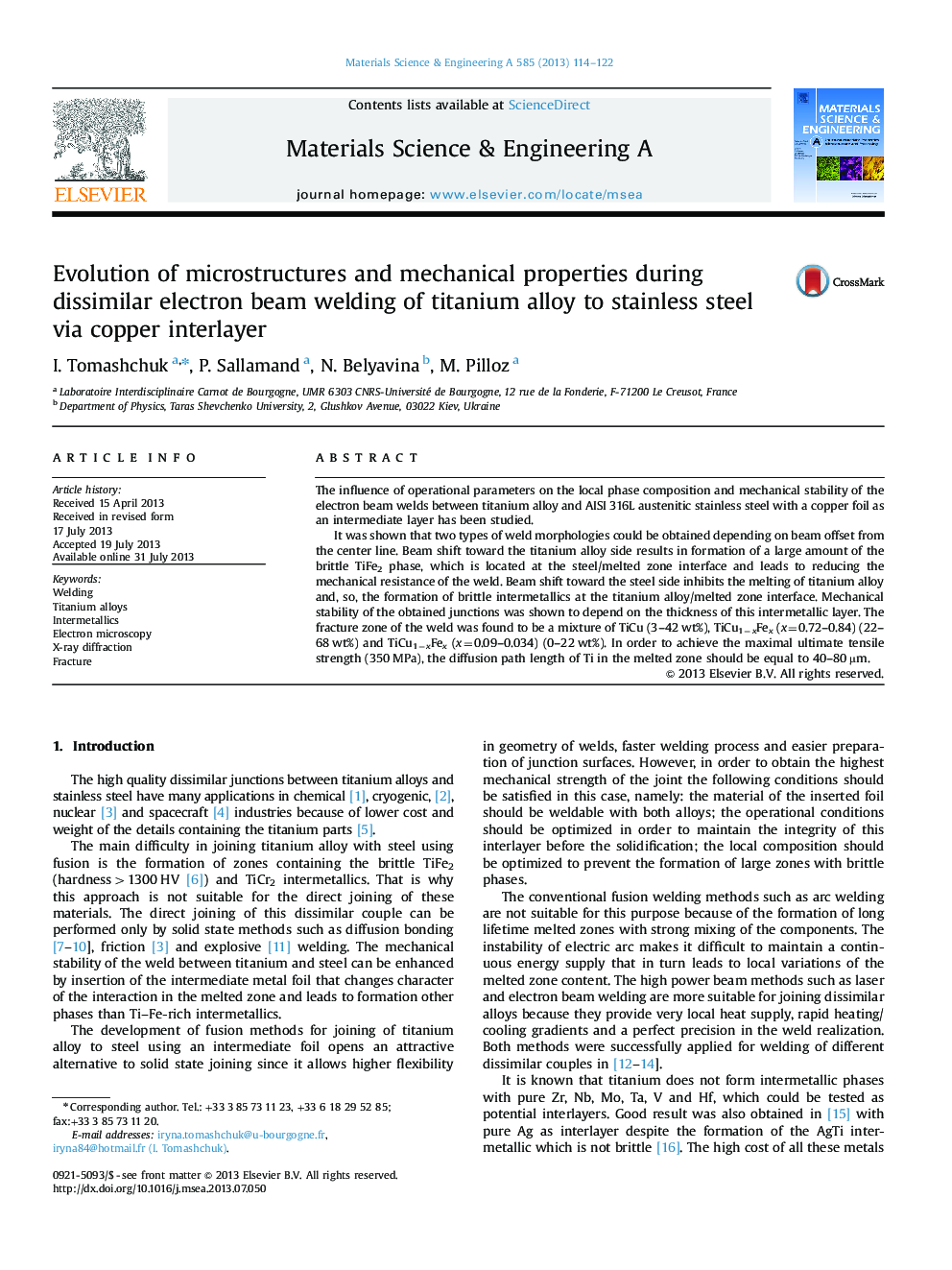| Article ID | Journal | Published Year | Pages | File Type |
|---|---|---|---|---|
| 7982380 | Materials Science and Engineering: A | 2013 | 9 Pages |
Abstract
It was shown that two types of weld morphologies could be obtained depending on beam offset from the center line. Beam shift toward the titanium alloy side results in formation of a large amount of the brittle TiFe2 phase, which is located at the steel/melted zone interface and leads to reducing the mechanical resistance of the weld. Beam shift toward the steel side inhibits the melting of titanium alloy and, so, the formation of brittle intermetallics at the titanium alloy/melted zone interface. Mechanical stability of the obtained junctions was shown to depend on the thickness of this intermetallic layer. The fracture zone of the weld was found to be a mixture of TiCu (3-42 wt%), TiCu1âxFex (x=0.72-0.84) (22-68 wt%) and TiCu1âxFex (x=0.09-0.034) (0-22 wt%). In order to achieve the maximal ultimate tensile strength (350 MPa), the diffusion path length of Ti in the melted zone should be equal to 40-80 µm.
Related Topics
Physical Sciences and Engineering
Materials Science
Materials Science (General)
Authors
I. Tomashchuk, P. Sallamand, N. Belyavina, M. Pilloz,
